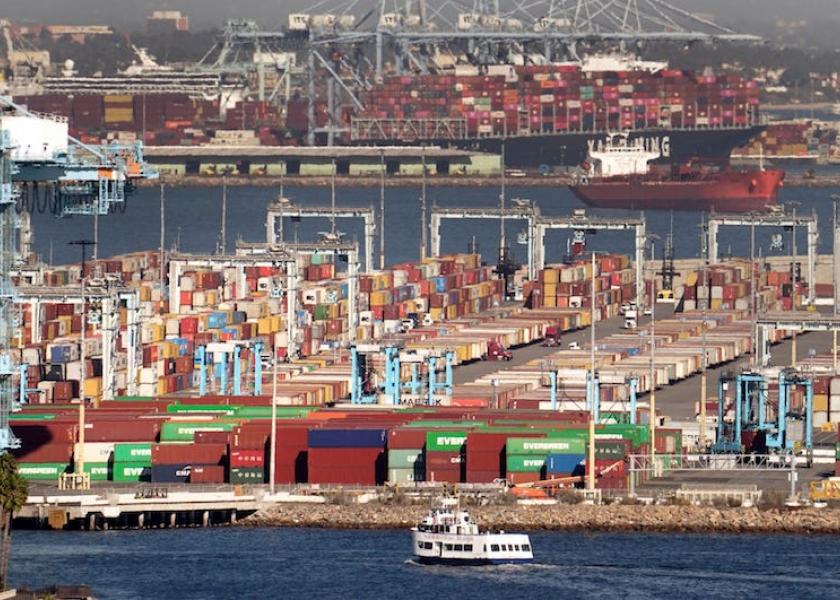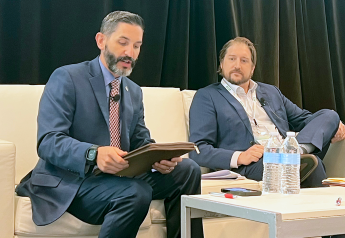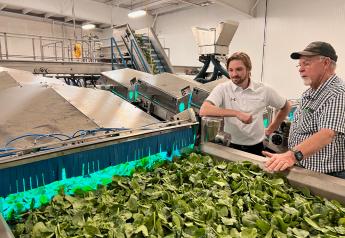Agriculture Left High Centered as Supply Chain Problems Expected to Persist Well into 2022

Equipment manufacturer CNH announced it’s idling production in Europe due to a shortage of semiconductors. Fertilizer prices are nearing new highs, with concerns mounting about whether enough supplies will reach the U.S in time for planting next spring. The supply chain issues are becoming one of the biggest concerns for agriculture, and some economists say as the bottlenecks reach a critical point, it could take at least a year to remedy the chaos currently taking hold of the global supply chain.
In early October, Southern California ports had 90 container ships in the port, 63 of which were waiting off the shore. And in Los Angeles, nearly 500,000 20-foot shipping containers were in waiting mode, as the cargo ships waited for ships to unload and space to open up to anchor at the ports.
The Ports of Los Angeles and Long Beach account for 40% of all shipping containers entering the U.S., which is a main source of the bottleneck dilemma. And it’s not just ships waiting to unload. The challenge is further fueled by an insufficient number of truck drivers to get the goods out of the Port and dispersed across the U.S.
Last week, the issue was discussed and debated at the White House. As a result, President Biden announced one solution: expanding operating hours at a key West Coast port. The Biden administration announced a brokered agreement that would turn the Port of Los Angeles into a 24-hour operation, seven days a week. The White House said the expanded hours would nearly double the time that cargo will be able to move in and out of port.
“I want to be clear this across-the-board commitment to going 24-7, this is a big first step in speeding up the movement of materials and goods through our supply chain,” said Biden. “But now we need the rest of the private sector chain to step up as well. This is not called a supply chain for nothing. This means the terminal operators, railways, trucking companies, shippers and other retailers as well.”
The private sector includes major U.S. retailers and transportation services like FedEx, Walmart, UPS and Home Depot. Those companies will be charged with ramping up operations in order to clear cargo from the ports which, in turn, the administration says will free up space at the port.
USDA at the White House
USDA Chief Economist Seth Meyer attended the virtual supply chain meeting with the White House, as agriculture is a key piece of the supply chain puzzle reeling from ramifications of the supply chain concerns.
“We are spending a lot of time on supply chain issues – most definitely a lot – but what you also want to avoid as an economist are unintended consequences of putting a policy in place that really shifts transportation,” Meyer told Farm Journal. “It kind of distorts it and says, ‘We're going get more of this, and yet it's going to hinder delivery of tractor parts,’ right? You don't want to have those unintended spillover consequences. But we're spending a lot of time saying, ‘Hey, what are the levers out there that government can help with? And you know, are those the ones that you want to pull?’”
Meyer says USDA is currently exploring ways the agency could help facilitate fixes, and what role USDA could play as the Biden administration works through one of its largest challenges.
“Is there a role at USDA to help say, ‘Okay, we'll put inspectors in place and we’ll help facilitate this movement,’” Meyer adds. “What you're looking for is you're identifying the primary choke point and trying to solve that sometimes reveals that there are other choke points in which you have to move and try to solve. But I think that when the government says, ‘Hey, what can we do to improve throughput of these containers?’ that's a good place to start.”
Can Policy Solve Supply Chain Problems?
After Biden’s announcement about expanded operating hours at West Coast ports, a push for policy could unveil other measures and steps the administration will need to take to find a solution. But is policy the fix for the supply chain issues rippling across the U.S. today? Economists have mixed views on whether policy can help solve an issue so complex.
“I tend to think that it can help the market sort things out. It's not a fix in and of itself,” Meyer adds. “Can you make adjustments that help the market allocate those resources and sort them out? Are there things that the government can do to help facilitate those transactions?”
Texas A&M agricultural economist and co-director of the Agricultural & Food Policy Center says while government intervention could help, any action needs to be minor.
“We're economists, and we would say that the markets need to work, and if the government can give a nudge here and there, fine. But basically, the markets are going allocate the resources out there,” says Outlaw. “And from my view, that's really what I would think needs to happen.”
University of Missouri agricultural economist Scott Brown says policy won’t be the sole remedy for the supply chain issues today. However, he does think there are some barriers that could be removed to help free up more movement at ports.
“I will continue to say we need to do everything possible to clear those ports out,” says Brown. “Getting help from the administration there can be beneficial. Let's not just overstate that we're going to fix this overnight. It's going to take time to work through many of the supply bottlenecks. And frankly, I think we will live with those supply bottlenecks for many months ahead. It's not going to be a quick fix.”
Problems to Persist Months or Years?
Just how long will it take to work the severe wrinkles out of the supply chain? As the situation becomes more dire, economists are also mixed on just how long it will take to get the supply chain back in standard operating order.
A Wall Street Journal survey asked a group of economists that exact question. The survey found labor shortages and supply constraints are bigger risks to the economy than Covid-19. While the majority of economists surveyed (more than 30%) say they think supply chain disruptions will recede by Q2 of 2022, more than 10% see the issues lasting into 2023 or later.
USDA’s chief economist is in the camp it will take months, not a year.
“I think we're still talking months, I really do,” says Meyer. “And it's not just things like tractor parts, but it's hauling food products, it's hauling cattle, it's all these transportation issues. It's getting those truck parts back, it's delivery of food products to the institutions. I think we've got a while to sort these things out. When I look at USDA, you've got short-run port resolutions as in opening for 24 hours, and then medium-term things where you try to improve the throughput by getting more truck drivers."
Shortage of Truck Drivers Adding to the Issues
Last Month, USDA announced the availability of $3 billion to help with a host of concerns, including supply chain issues. Those funds will come from the Commodity Credit Corporation. That’s in addition to the $2 billion USDA already announced to put toward helping solve persistent supply chain issues. But one of the biggest bottlenecks is coming from a lack of truck drivers to move products. And groups like International Dairy Foods Association (IDFA) say there are quick fixes that could help get more drivers on the road.
“One way that the government could help potentially is in the infrastructure package that's being discussed right now. There's some money in there for trying to get some additional CDL drivers on the road between the ages of 18 and 21,” says Matt Herrick, vice president of communications for IDFA. “There's a pilot program, which would allow some of these drivers who are below the age of 21 to drive interstate. That would be a big opportunity, I think, to get more truck drivers on the road and to do it safely.”
The other barrier that the White House could help remove is the maximum weights truck drivers are allowed to carry.
“Can we raise those truck weights? We've got increased demand in our sector, increased demand for our products. Can we keep those truck weights up in a safe way, but keep them elevated? And also, can we continue to raise the hours of operation and keep those elevated?” Herrick says. “And can we do that so truck drivers can stay on the road and make those deliveries in a safe manner?
As shippers try to raise wages in order to attract more drivers to get on the road, the action not coming without other costs. One grape grower told The Packer that new drivers are having trouble backing into tight spots to unload. The other issue is teaching younger drivers how to operate trucks with manual transmissions. One trucking operator told Farm Journal that many younger drivers haven’t trained on manual transmission trucks and can only drive ones with automatic transmissions.







